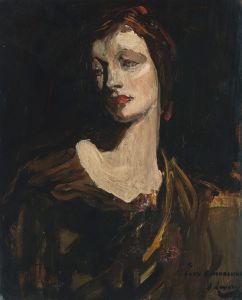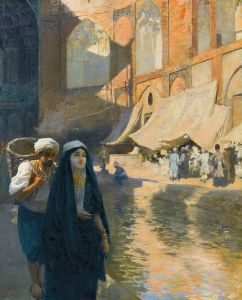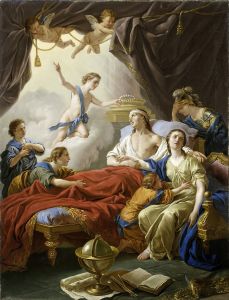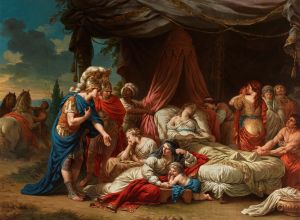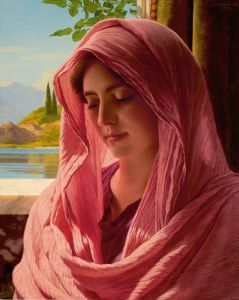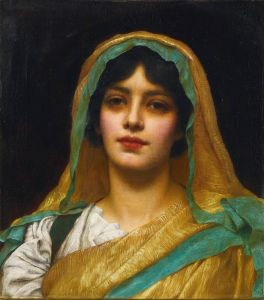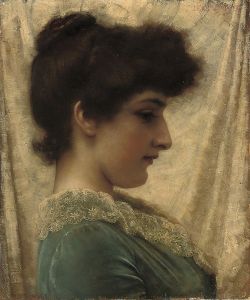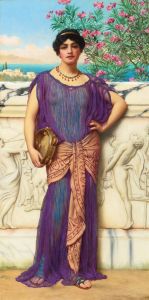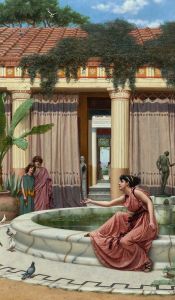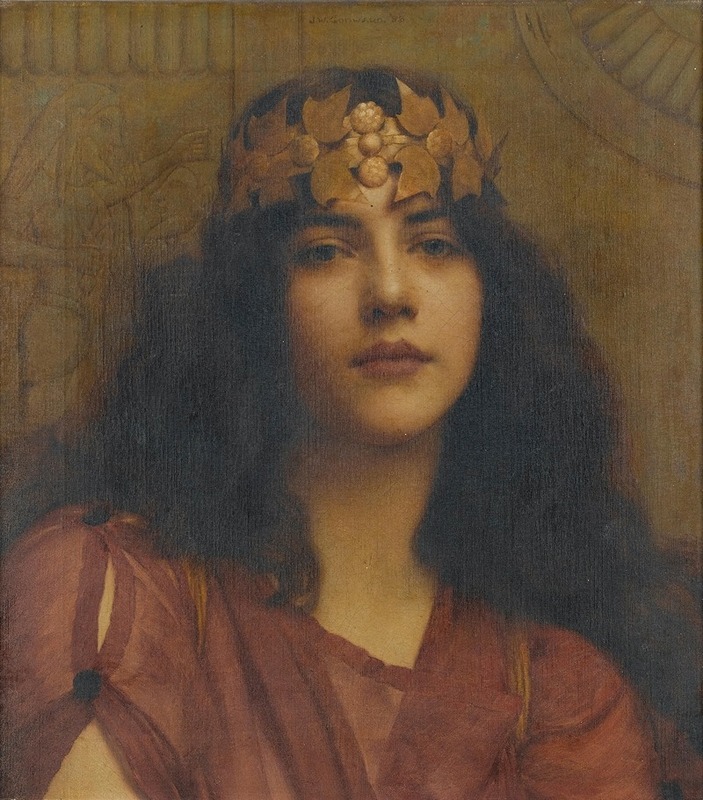
A Persian princess
A hand-painted replica of John William Godward’s masterpiece A Persian princess, meticulously crafted by professional artists to capture the true essence of the original. Each piece is created with museum-quality canvas and rare mineral pigments, carefully painted by experienced artists with delicate brushstrokes and rich, layered colors to perfectly recreate the texture of the original artwork. Unlike machine-printed reproductions, this hand-painted version brings the painting to life, infused with the artist’s emotions and skill in every stroke. Whether for personal collection or home decoration, it instantly elevates the artistic atmosphere of any space.
John William Godward was a British painter born on August 9, 1861, and he is often associated with the Neo-Classicist movement. His works are characterized by their meticulous attention to detail, vibrant colors, and classical themes. Godward's paintings often depict women in classical settings, drawing inspiration from ancient Rome and Greece. "A Persian Princess" is one of his notable works, though specific details about this painting are limited.
"A Persian Princess" exemplifies Godward's fascination with the ancient world and his skill in portraying the beauty and elegance of his subjects. The painting likely features a young woman adorned in luxurious attire, reflecting the opulence and exoticism associated with Persian royalty. Godward's attention to detail is evident in the intricate patterns and textures of the fabrics, as well as the delicate rendering of the woman's features.
Godward's style is often compared to that of his contemporary, Sir Lawrence Alma-Tadema, another prominent figure in the Neo-Classicist movement. Both artists shared a passion for classical antiquity and often depicted similar themes in their works. However, Godward's paintings are distinguished by their more intimate and personal portrayal of their subjects, often focusing on solitary figures in serene and contemplative poses.
The setting of "A Persian Princess" would likely be an idealized version of the ancient world, a common characteristic of Godward's work. His paintings often feature marble terraces, lush gardens, and classical architecture, creating a sense of timeless beauty and tranquility. This setting serves as a backdrop that enhances the elegance and grace of the subject, allowing viewers to immerse themselves in the romanticized vision of antiquity.
Godward's career was marked by his dedication to his artistic vision, despite the changing tastes of the art world during his lifetime. As the 20th century progressed, the art scene began to shift towards modernism, and Godward's classical style fell out of favor. Nevertheless, he continued to produce works that adhered to his aesthetic principles, maintaining a focus on beauty, harmony, and technical precision.
Tragically, Godward's life ended in 1922 when he took his own life. It is said that he felt increasingly isolated and disheartened by the declining popularity of his artistic style. Despite this, his work has experienced a resurgence of interest in recent years, with art enthusiasts and collectors recognizing the skill and beauty inherent in his paintings.
Today, "A Persian Princess" and other works by Godward are appreciated for their exquisite craftsmanship and timeless appeal. They offer a glimpse into a world of elegance and refinement, capturing the imagination of those who admire the classical ideals of beauty and grace. Godward's legacy endures as a testament to his unwavering commitment to his artistic vision and his ability to transport viewers to a bygone era of splendor and sophistication.






